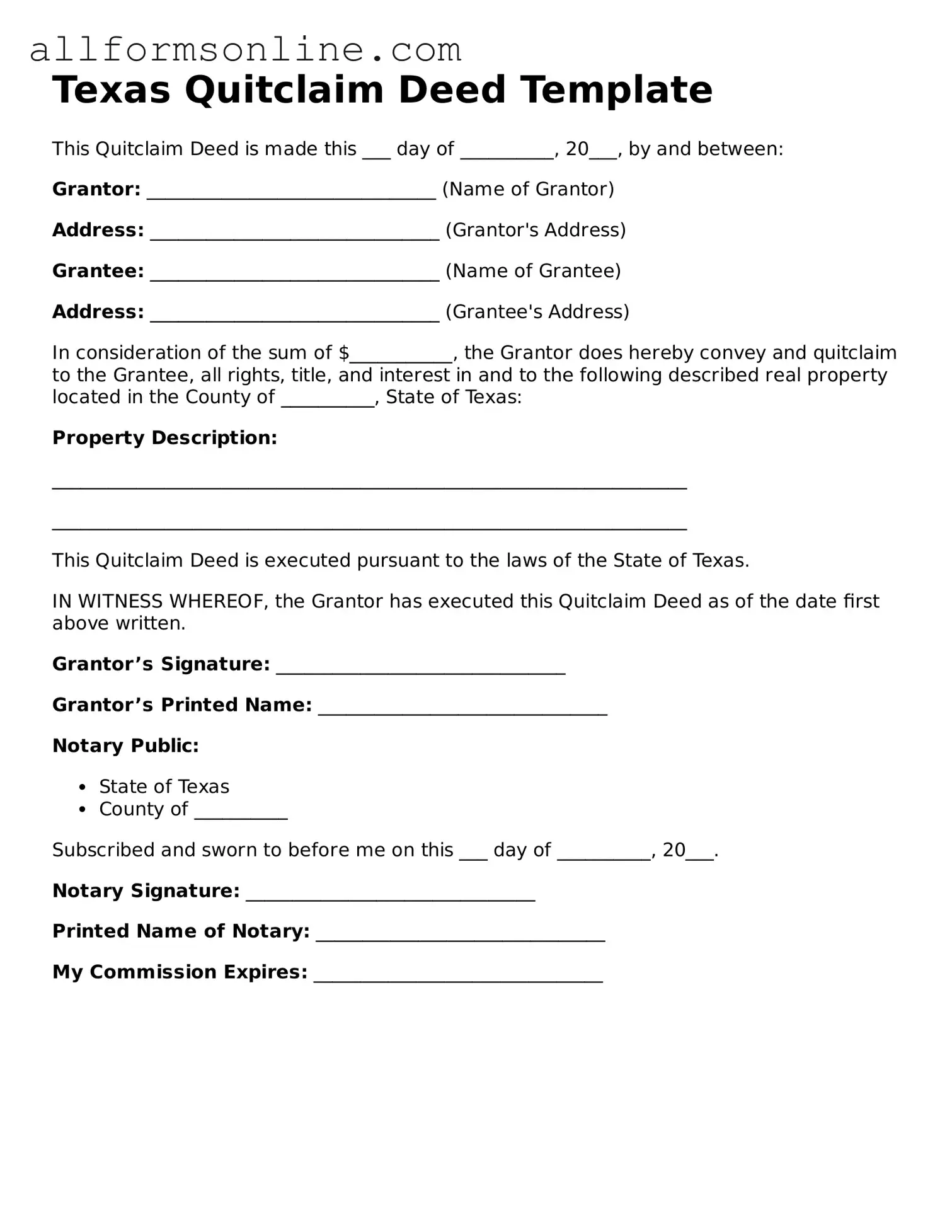What is a Texas Quitclaim Deed?
A Texas Quitclaim Deed is a legal document used to transfer ownership of real estate from one party to another. Unlike a warranty deed, it does not guarantee that the property is free of liens or other claims. This type of deed is often used between family members or in situations where the parties know each other well.
When should I use a Quitclaim Deed in Texas?
You might consider using a Quitclaim Deed in various scenarios, such as transferring property between family members, adding or removing a spouse from the title after marriage or divorce, or clarifying ownership in a joint ownership situation. It’s a straightforward way to handle property transfers without the complexities of a warranty deed.
What information is required to complete a Quitclaim Deed?
To complete a Quitclaim Deed, you will need the names of the grantor (the person transferring the property) and the grantee (the person receiving the property), a legal description of the property, and the date of the transfer. It’s also important to include any relevant information regarding the consideration, or what is being exchanged for the property, even if it’s just a nominal amount.
Do I need to notarize a Quitclaim Deed in Texas?
Yes, a Quitclaim Deed must be signed in the presence of a notary public in Texas. The notary will verify the identities of the parties involved and witness the signing. This step is crucial for the deed to be legally binding and to ensure that it can be recorded with the county clerk’s office.
How do I record a Quitclaim Deed in Texas?
After completing and notarizing the Quitclaim Deed, you must file it with the county clerk’s office in the county where the property is located. There may be a recording fee, so check with the local office for the exact amount. Recording the deed officially updates public records and provides legal notice of the transfer.
Can a Quitclaim Deed be contested?
Yes, a Quitclaim Deed can be contested, but it can be more challenging than contesting other types of deeds. If there is evidence of fraud, coercion, or lack of capacity at the time of signing, a party may have grounds to contest the deed. Legal advice is often necessary in these situations to navigate the complexities involved.
Are there any tax implications when using a Quitclaim Deed?
There may be tax implications associated with transferring property via a Quitclaim Deed. While the transfer itself may not trigger a tax event, it’s essential to consult a tax professional to understand any potential capital gains taxes or property tax reassessments that could arise from the transaction.
Is a Quitclaim Deed the same as a Warranty Deed?
No, a Quitclaim Deed is not the same as a Warranty Deed. A Warranty Deed provides a guarantee that the grantor holds clear title to the property and has the right to transfer it. In contrast, a Quitclaim Deed transfers whatever interest the grantor has in the property, without any warranties or guarantees regarding the title. This distinction is crucial when deciding which type of deed to use.
